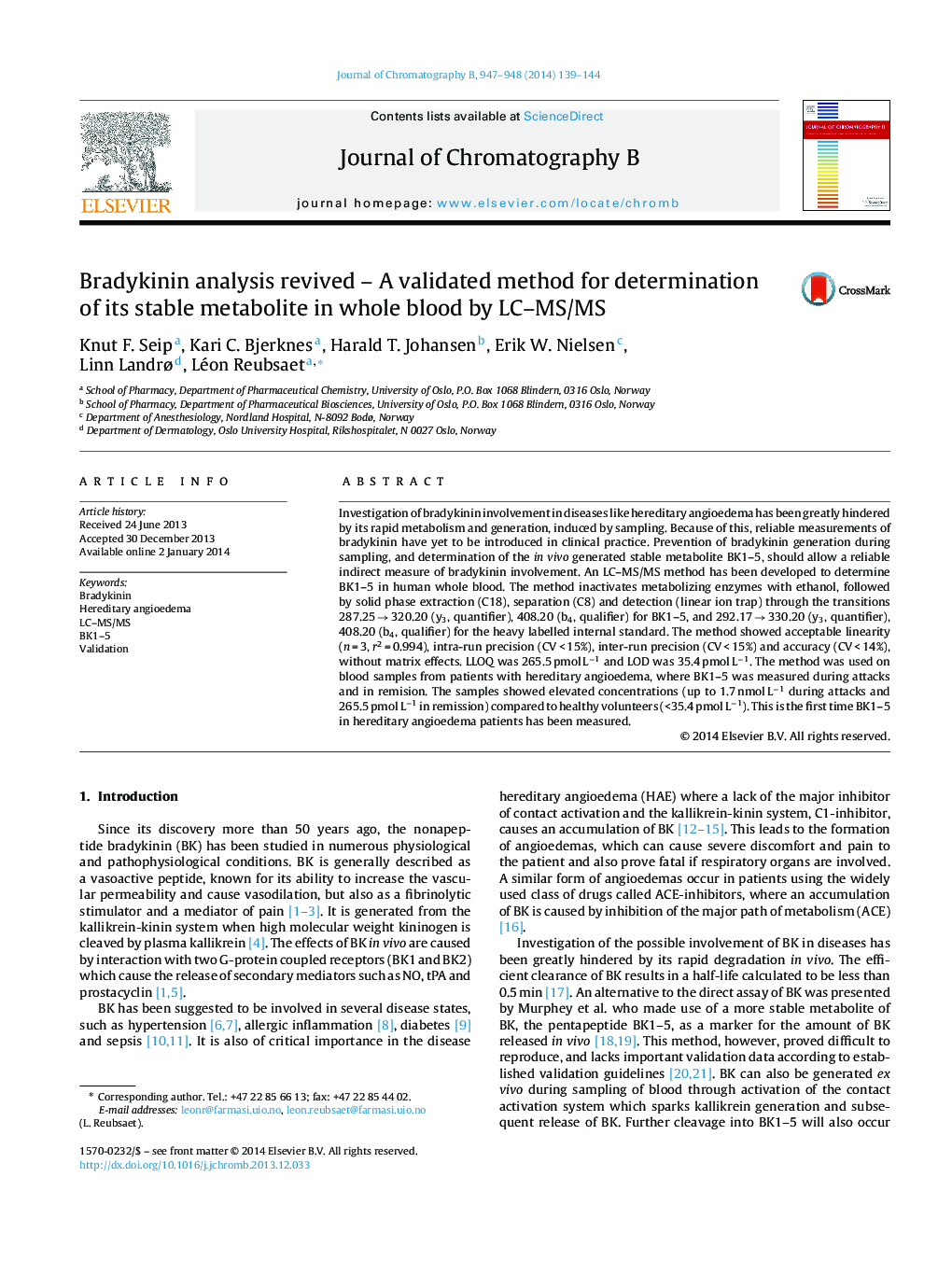| Article ID | Journal | Published Year | Pages | File Type |
|---|---|---|---|---|
| 1212856 | Journal of Chromatography B | 2014 | 6 Pages |
•A validated method for determination of the metabolite, bradykinin 1–5 (BK1–5), has been developed.•The validation confirms good linearity, repeatability (intra-run), reproducibility (inter-run), accuracy, and recovery.•Increased BK1–5 levels during hereditary angioedema attacks were measured.
Investigation of bradykinin involvement in diseases like hereditary angioedema has been greatly hindered by its rapid metabolism and generation, induced by sampling. Because of this, reliable measurements of bradykinin have yet to be introduced in clinical practice. Prevention of bradykinin generation during sampling, and determination of the in vivo generated stable metabolite BK1–5, should allow a reliable indirect measure of bradykinin involvement. An LC–MS/MS method has been developed to determine BK1–5 in human whole blood. The method inactivates metabolizing enzymes with ethanol, followed by solid phase extraction (C18), separation (C8) and detection (linear ion trap) through the transitions 287.25 → 320.20 (y3, quantifier), 408.20 (b4, qualifier) for BK1–5, and 292.17 → 330.20 (y3, quantifier), 408.20 (b4, qualifier) for the heavy labelled internal standard. The method showed acceptable linearity (n = 3, r2 = 0.994), intra-run precision (CV < 15%), inter-run precision (CV < 15%) and accuracy (CV < 14%), without matrix effects. LLOQ was 265.5 pmol L−1 and LOD was 35.4 pmol L−1. The method was used on blood samples from patients with hereditary angioedema, where BK1–5 was measured during attacks and in remision. The samples showed elevated concentrations (up to 1.7 nmol L−1 during attacks and 265.5 pmol L−1 in remission) compared to healthy volunteers (<35.4 pmol L−1). This is the first time BK1–5 in hereditary angioedema patients has been measured.
